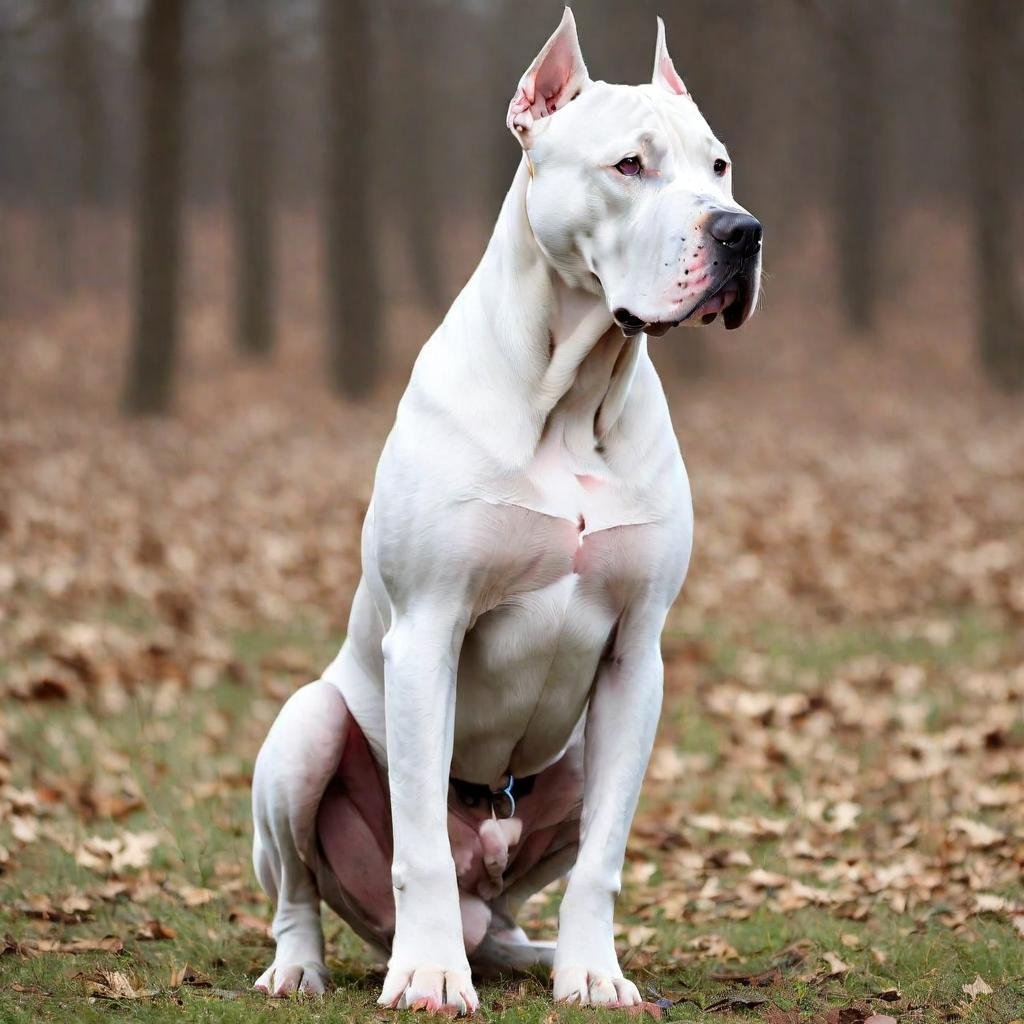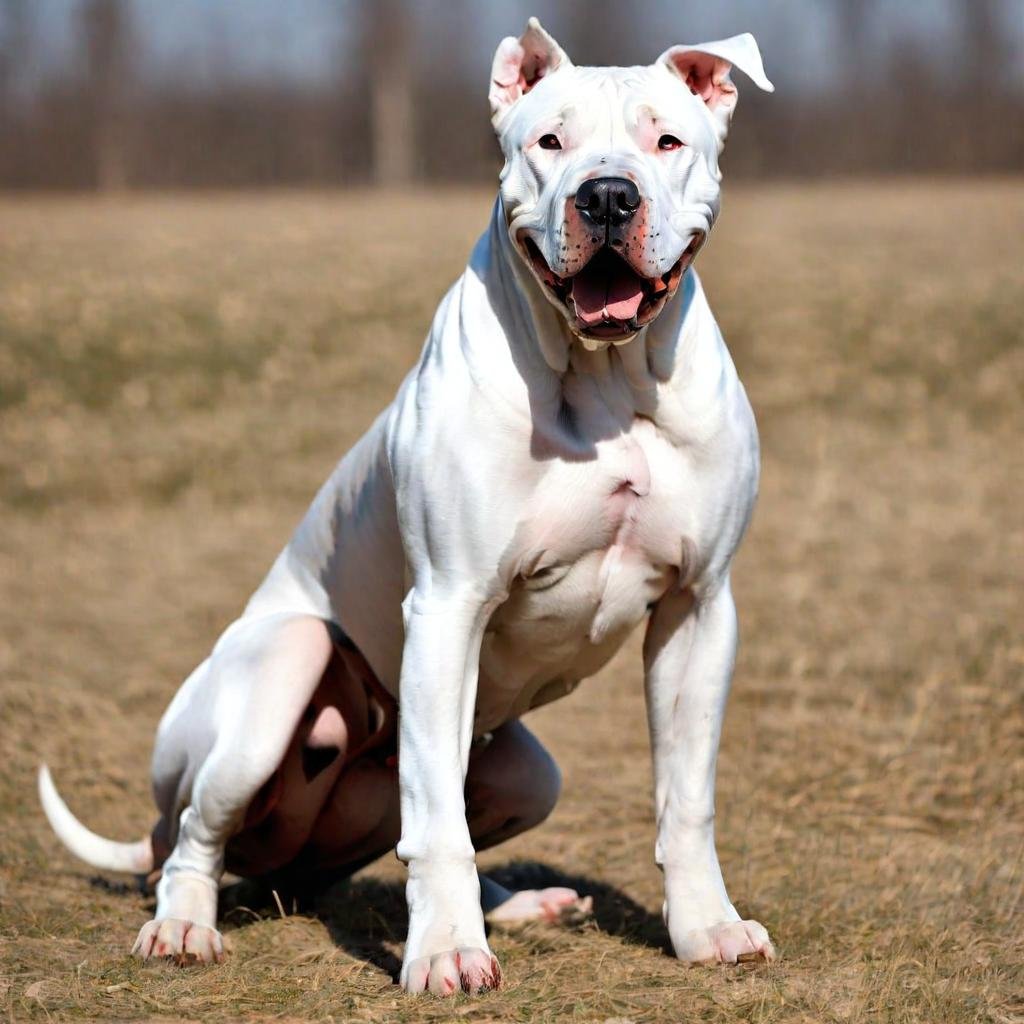“Stray Without a Collar: Your Step-by-Step Guide to Reuniting Lost Dogs with Their Owners”
Introduction :- ” what to do when you find a lost dog without collar “
Finding a lost dog without a collar can be a heartbreaking experience. Imagine that you are out for a walk or running errands and suddenly, a scared and confused dog crosses your path. Without any identification, it can be challenging to know what to do next. This guide will help you understand what to do when you find a lost dog without collar and take the right steps to ensure the dog’s safety and hopefully be reunited with its owner.

Table of Contents
First of all, it is important to remain calm and assess the situation. Approach the dog slowly and carefully, as he may be frightened or even injured. If you can safely secure the dog, give him some water and a little food to help him feel more comfortable. Next, check for any hidden identification, such as tattoos or microchips. You can take the dog to the nearest veterinarian or animal shelter to get it scanned for a microchip.
Social media and online platforms can be powerful tools in these situations. Post photos and descriptions of the dog on local community groups and lost pet pages. You can be the vital link in reuniting a worried owner with their beloved pet. Through compassion and the right actions, you can make a big difference in a lost dog’s life.
Stay Calm and Safe ;
When you find a lost dog without a collar, it is important to remain calm and ensure the safety of both yourself and the dog. The dog may be scared, anxious, or even injured, so approach it with caution. Start by observing the dog’s body language from a distance. If he seems friendly and approachable, slowly move closer while speaking in a soothing tone. Avoid sudden movements that might startle him.

Remember, your safety comes first. If the dog seems aggressive or extremely scary, maintain a safe distance and call local animal control for assistance. If the dog seems approachable, crouch down and extend your hand to sniff him to make him seem less intimidating.
Once you feel it is safe, try securing the dog using a leash, a piece of rope or even a belt. This will prevent him from getting stuck in traffic or getting lost again. Give him some water and food to gain his trust and help him relax.
By staying calm and thinking clearly about what to do when you find a lost dog without a collar, you can effectively manage the situation and ensure both your safety and the dog’s well-being.
Securing the Dog ;
When you are faced with the dilemma of what to do if you find a lost dog, securing the dog safely is the top priority. Start by approaching the dog slowly and carefully to avoid startling him. Speak softly and walk slowly, giving the dog a chance to see and smell you before making any physical contact. This helps build trust and reduce the dog’s anxiety.

If the dog seems friendly and outgoing, use a leash if you have one. If not, a makeshift leash made of rope, belt or even a scarf can work in a pinch. Slide it gently around the dog’s neck, making sure it is comfortable but not too tight. If the dog is hesitant, try offering some food or a treat to bring him closer.
If the dog is very scared or shows signs of aggression, it is best to maintain a safe distance and contact local animal control for help. They are trained to deal with such situations and can rescue the dog without causing harm.
Safely securing the dog is an important step in determining what to do if you find a lost dog. This ensures the dog’s safety and keeps it from getting lost or injured when you take the next step.
Checking for Identification ;
When figuring out what to do when you find a lost dog without a collar, it is essential to check any type of identification. Even without a collar, a dog may still have ways of recognizing its owner.

Start by gently inspecting the dog for any hidden identifications. Some dogs have tattoos or markings on their inner thighs or ears that can help trace their origins. If the dog is calm and allows you to handle him, look carefully for these marks.
The next step is to take the dog to a local veterinarian or animal shelter. Most veterinarians and shelters have microchip scanners. A microchip, usually implanted under the skin between the dog’s shoulder blades, can provide important information about the dog’s owner when scanned. This small device maintains a unique ID number linked to the owner’s contact information in the database.
If no microchip or tattoo is found, don’t lose hope. The veterinarian or shelter staff can guide you in the next steps and may have additional resources to help you find the dog’s owner.
Checking identification is an important part of what to do when you find a lost dog without a collar, as it can help reunite the lost pet with its concerned owner faster.
Providing Immediate Care ;
When figuring out what to do when you find a lost dog without a collar, it is important to provide immediate care to ensure the dog’s well-being. Start by giving the dog some water, especially if he seems tired or thirsty. Dehydration can be a serious problem, so a fresh bowl of water can help the dog feel more comfortable.

Next, see if the dog will accept some food. A simple, plain meal like boiled chicken or rice is usually a safe choice. Avoid giving the dog anything too heavy or unfamiliar, as this may upset his stomach.
Check the dog for any visible injuries or signs of discomfort. If you see a wound, clean it gently with water and apply a basic antiseptic on it, if there is one. However, avoid using any human medications, as they can be harmful to dogs. If the dog appears seriously injured or ill, contact a veterinarian immediately.
Creating a calm environment is also important. Find a quiet, safe place where the dog can rest. This could be a spare room in your home or a secure area in your patio. When you find a lost dog without a collar, providing immediate care can make a significant difference to the dog’s comfort and safety while you work to locate its owner.
Contacting Local Authorities ;
When deciding what to do when you find a lost dog without a collar, contacting local authorities is an important step. Start by calling your local animal control or animal shelter. These organizations often have the resources and systems in place to help reunite lost pets with their owners. Provide them with a detailed description of the dog, including its size, color, and any distinguishing features.

It is also a good idea to notify local veterinarians, as owners often contact them when their pets go missing. Provide the same detailed description and your contact information to the veterinarian’s office.
If you are unable to reach animal control or a shelter, consider calling your local police department’s non-emergency number. They may have additional resources or be able to assist in some way.
In some areas, there are specific organizations or rescue groups dedicated to helping lost pets. A quick online search can help you find these groups, and they often have volunteers who can assist in finding a dog owner.
Contacting local authorities is an essential part of when you find a lost dog without a collar. They can provide guidance and support to help ensure that the dog is safely reunited with its owner.
Using Social Media and Online Platforms ;
If you find a lost pet, using social media and online platforms can greatly increase your chances of reuniting it with its owner. Start by taking clear photos of the dog from different angles. Post these images on your personal social media accounts with detailed descriptions, including where and when you found the dog.

Local community groups on Facebook are excellent places to share your posts. Many neighborhoods have groups dedicated to lost and found pets, where members actively help reunite lost animals with their owners. Include hashtags like #LostDog and the name of your location to increase visibility.
Next, find a platform designed specifically for lost pets, like PawBoost or PetFinder. These websites allow you to create a detailed post about the found dog and reach a wide audience of pet owners and animal lovers.
Don’t forget to check out platforms like Nextdoor, where neighbors share local information and can quickly spread the word about a lost pet.
Using social media and online platforms effectively can make a big difference if you find a lost pet. With a few posts, you can join a network of people eager to help and significantly increase your chances of a happy reunion.
Creating and Distributing Flyers ;
When you find a lost pet, creating and distributing flyers can be a powerful way to reach out to people who may know the owner. Start by designing a clear and attractive flyer that includes a recent photo of the pet, preferably in color, and a description of where and when you found it.

Include essential information such as the pet’s breed (if known), size, any distinctive markings, and your contact information. Keep text concise and easy to read from a distance.
Once your flyer is ready, distribute it in high-traffic areas where you’ve got a pet, such as community bulletin boards, local businesses, veterinary offices and pet supply stores. Make sure the flyers are securely attached and will not blow away easily.
You can also hand out leaflets to people passing by, as they may live or work in the area and recognize the pet or know its owner. If applicable, be sure to mention any rewards offered for information leading to the safe return of the pet, as this may motivate people to keep track.
Creating and distributing flyers about what to do if you find a lost pet is a proactive step. This helps spread the word quickly and effectively, increasing the chances of the pet being reunited with its grateful owner.
Visiting Local Shelters and Veterinary Clinics ;
When you find a lost dog without a collar, it is important to go to local shelters and veterinary clinics for help reuniting the dog with its owner. First of all, call nearby animal shelters and veterinary hospitals and inform them about the found dog. Describe the dog’s appearance and distinctive characteristics, including where and when you found it.

Visit these facilities in person if possible, as some owners may contact them directly when searching for their lost pets. Staff members can also check for microchips, which often contain the owner’s contact information.
While you’re there, leave your contact details so that if the owner comes forward they can reach you. It’s also helpful to regularly check shelters’ lost and found databases or ask if you can leave a flyer with the dog’s information.
When you find a lost dog without a collar, by visiting local shelters and veterinary clinics, you increase the chances of being reunited with its concerned owner. Your proactive efforts can make a huge difference in ensuring the dog’s safe return home.
Considering Temporary Care ;
When you find a lost dog without a collar, considering temporary care can be a compassionate and practical option. First, assess your ability to care for the dog safely. Make sure you have a safe space where the dog can stay comfortably away from any potential danger.

Provide the dog with its basic needs like water, food, and a comfortable place to sleep. If you have other pets, introduce them gradually and monitor their interactions to prevent any conflicts. Be sure to monitor the dog for any signs of illness or distress, and seek veterinary care if necessary.
Reach out to local animal shelters and rescues to inform them about the situation. They can provide additional support or advice about what to do next. In the meantime, continue your efforts to find the owner by posting on social media, making flyers, and contacting local authorities.
Taking care of a lost dog temporarily can be a rewarding experience. This provides a safe environment for the dog while you work on reuniting the dog with its owner. Remember, when you find a lost dog without a collar, your kindness and patience can make a significant difference in the dog’s life and help ensure a happy reunion.
Legal Considerations ;
When you find a lost dog without a collar, it is important to understand the legal aspects involved. Different areas have different laws regarding lost and found pets, so it is important to familiarize yourself with local regulations.

First, report the found dog to your local animal control or animal shelter. Many areas have laws that require reporting within a certain time frame any pet finds. This step ensures that you are complying with legal requirements and increases the chances of reuniting the dog with its owner.
Some areas mandate that pets be taken to a shelter for the duration of their mandatory holding. This period gives the rightful owner time to claim their lost pet. Failure to follow these regulations can result in legal complications, even if you have the best intentions.
Additionally, avoid giving the dog to someone or adopting it yourself without consulting local authorities. There are often legal processes for adopting found pets, which ensure that every possible effort is first made to find the original owner.
It is important to understand these legal considerations when you find a lost dog without a collar. This helps ensure that you are acting within the law while providing the best possible chance for a happy reunion.
Finding a New Home if Necessary ;
When you find a lost dog without a collar and the owner cannot be located, it may be necessary to find a new home for the dog. Start by reaching out to local animal shelters and rescue groups. These organizations often have the resources and networks to help find a dog a loving home.

Next, use social media to share the dog’s story and photos. Post on community groups, pet adoption pages, and with friends and family who may be interested or know someone who is. Describe the dog’s temperament, known medical history, and why it needs a new home.
If you decide to rehome the dog yourself, conduct a thorough screening process to ensure it goes to a responsible and caring family. Ask potential adopters about their experience with pets, their living conditions, and their plans for caring for the dog. A home visit or meeting at a neutral location can help you feel more confident in your decision.
Finally, consider partnering with local veterinarians who may know families interested in adopting. By following these steps, you can find a new home if necessary when you find a lost dog without a collar, ensuring that the dog has a bright and safe future.
Preventing Future lost Pets ;
When considering what to do if you find a lost dog without a collar, it is important to also think about preventing lost pets in the future. Here are some proactive steps to ensure pets remain safe and easily identified.

First, emphasize the importance of collars and ID tags. Every pet should wear a collar with an ID tag that includes the owner’s contact information. This simple step can make a world of difference if the pet ever gets lost.
Microchipping is another important solution. A microchip provides a permanent form of identification that cannot be lost or removed. Encourage pet owners to keep their microchip information up to date, to ensure quick reunification if the pet is found.
Regularly check and maintain fences and gates in the house. Many pets run away from unsafe areas, so making sure the yard is secure can prevent accidental escapes.
Training is also important. Teaching pets basic commands like “come” and “stay” can help keep them safe in potentially dangerous situations.
By spreading awareness of these preventative measures, you can help others avoid the grief of losing a pet. These steps are essential to prevent future pet loss and ensure the safety and well-being of our furry friends.
Conclusion
Ultimately, knowing what to do when you find a lost dog without a collar can make a significant difference in the life of the lost pet and its worried owner. Start by staying calm and ensuring both your and the dog’s safety. Secure the dog gently and visit a veterinarian or animal shelter to have it checked for any hidden identification, such as tattoos or microchips. Providing immediate care such as water, food and a safe place to rest is important for the dog’s well-being.

Contact local authorities and use social media and online platforms to spread the word quickly. Creating and distributing flyers in your neighborhood and local businesses may increase the chances of reuniting the dog with its owner. If necessary, consider temporary care and understand the legal aspects to ensure you are complying with local regulations. If all efforts to find an owner fail, carefully finding a new home for the dog ensures that it gets the love and care it deserves.
It is important to prevent pets from getting lost in the future by encouraging the use of collars, ID tags, and microchips. Your proactive steps can turn a potentially distressing situation into a heartfelt reunion or a new beginning for a lost dog.
You might be interested in reading this post as well How to tighten dog collar
“Stray Without a Collar: Your Step-by-Step Guide to Reuniting Lost Dogs with Their Owners” Introduction :- ” what to do when you find a lost dog without collar “ Finding a lost dog without a collar can be a heartbreaking experience. Imagine that you are out for a walk or running errands and suddenly, a…
You can read this post https://tomeshnews.co.in/how-to-measure-dog-collar/
What should I do first when I find a lost dog without a collar?

The first step is to stay calm and assess the dog’s behavior and health. Approach the dog slowly and cautiously to ensure your safety and the dog’s.
How can I secure a dog without a leash?

Use a makeshift leash from a rope, belt, or even a scarf. Gently slip it around the dog’s neck, making sure it’s snug but not too tight.
Where can I check for identification if the dog has no collar?

Look for hidden tattoos or marks and take the dog to a local veterinarian or animal shelter to scan for a microchip.
What should I do if the dog seems injured or sick?

Provide basic care, such as water and a safe place to rest, and contact a veterinarian for professional help as soon as possible.
What are my legal obligations when I find a lost dog?

Report the found dog to local animal control or shelters and follow any local laws regarding the holding period for found pets.
What if the dog is aggressive or fearful?

Keep a safe distance and contact local animal control for assistance. They are trained to handle such situations safely.
